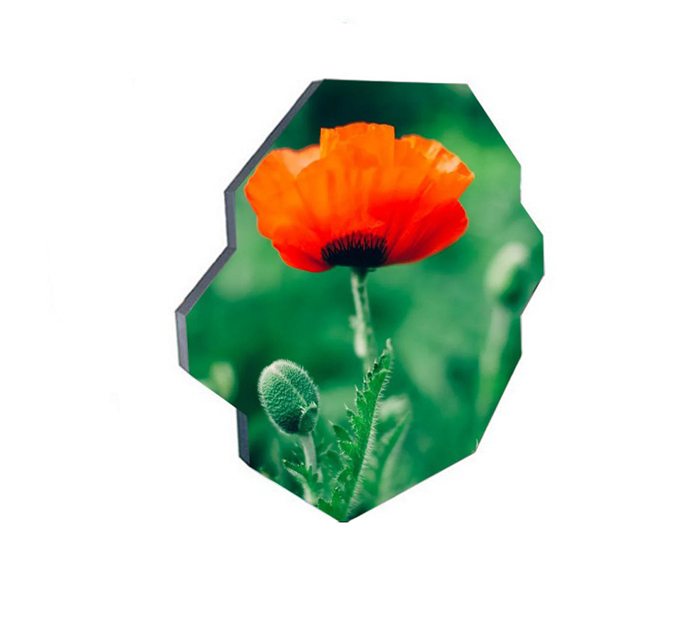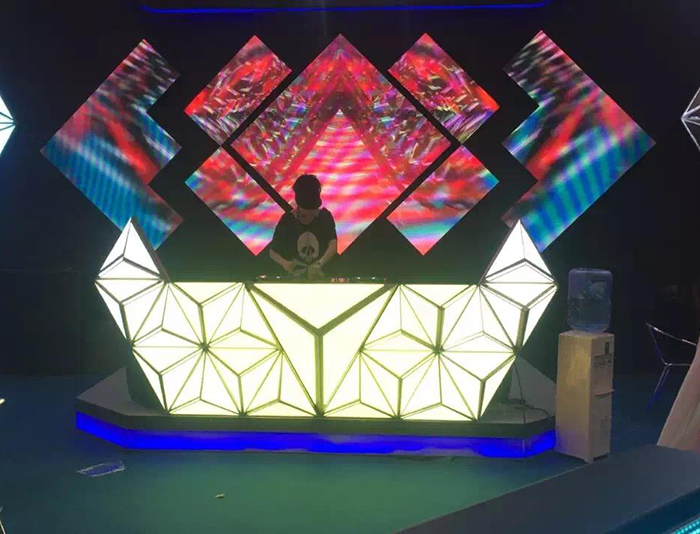Square: LED industrialization is stronger and stronger
In theory, LED lighting can last for 100,000 hours, LED chip luminous efficiency can reach 120lm / W or more, compared to OLED are not dominant.
Focusing on a new technology and new product, we must pay attention not only to the technology or the product itself, but also to the future industrialization. The industrialization of solid-state lighting is closely related to factors such as cost, longevity and light efficiency. Of course, these factors also have a causal relationship with the technology itself. Those who emphasize the competitive strength of LED lighting and sing the OLED lighting are all making a fuss about these factors.
For cost, the LED package price is $5/klm, and the overall luminaire price is $20 to $100 per kmm, and OLEDs are much more expensive than this. Some people think that OLED is not a cost-effective option at the price point of $300~500/klm (panel level), including luminaire design cost. Although OLED suppliers often target products in specialized market segments, high prices still hinder market development. Of course, OLED price issues are still attributable to the state of the art, with encapsulation layers (barriers, bonding and sealing) and integrated substrates (transparent conductive layers, substrates and exit layers) remain the main cost drivers.
For the life expectancy, the industry believes that LED lighting can theoretically last for 100,000 hours. Of course, there are problems such as heat affecting life and light decay during use, and the lifetime of OLED devices is seriously insufficient, generally only 5000~8000 hours, OLED lighting If the application is to be popularized, it must further improve its life. The initial goal is to reach the level of fluorescent lamps, that is, 20,000 hours, and the future goal is to reach 50,000 hours. To achieve this goal, there must be a major breakthrough in materials. And further improve the device structure and process level.
For the light effect, the luminous efficiency of the LED chip can reach 120lm/W or more. When the lamp is attached, the actual efficiency may drop to about 60~70lm/W under the influence of the lampshade and light scattering device; OLED lighting can only be done at present. To 30~50lm/W, some people say that there is a maximum of 60lm/W. However, there is still a big gap between the two.
Counterparty: OLED lighting will be a sudden rise
OLED lighting is a continuous spectrum, there is no UV problem at all, the light is more natural and soft, and it will hardly hurt people's vision.
The surface light source is a unique "label" for OLED lighting. Around this feature, it also has many advantages. For example, in the design of the luminaire, the LED is heated and concentrated, and a lampshade, a heat sink or a light scattering device is required, and the luminaire design is complicated. The planar light source characteristics of OLEDs, in addition to being suitable for various types of luminaire design, the heat dissipation performance is also better, without the need to additionally add heat-dissipating components to raise the cost of the lamps. If a flexible substrate is used, the OLED will become a bendable surface light source, which is believed to be favored by many designers, creating more and more imaginative lamp forms. Because it is a surface light source, OLED lighting has high potential in large-area light emission, and it is also advantageous in terms of size.
The impact on people's vision is another key factor in the discussion, and OLEDs are better at this point. OLED lighting is a continuous spectrum, you can use direct current, such natural light, its light is also softer, almost no harm to people's vision. More importantly, OLEDs are completely free of UV problems. Most of the LEDs use ultraviolet light to excite visible light, and then process to form white light or other colored light. If the component is exposed to ultraviolet light, it will cause harm to the human eye. Currently developed solar-like OLED components can be widely used in daylight and nighttime lighting situations. OLEDs have ultra-high color rendering lighting design, and their color temperature performance and color rendering can also change the performance characteristics of luminaire illumination through different processes or voltages.
From the perspective of the industry chain, some industry insiders believe that the OLED industry chain is shorter and the integration capability is stronger. Their reason is that for the upstream of the OLED industry chain, suppliers of various materials and components, such as organic semiconductor materials, electrode materials, substrate materials, light extraction materials, and so on. Substrate suppliers are likely to integrate the integrated electrode material and light extraction material with the substrate to provide a complete substrate solution to the midstream panel makers, which not only simplifies the process but also reduces costs.
For the midstream, it is the panel manufacturing field. Because the organic semiconductor materials used in OLED devices have low environmental tolerance, OLED panel manufacturers also assume the responsibility of packaging. This is different from the LED lighting industry. Currently, LED chip manufacturers and packagers mostly Still independent, although vertical integration has been raging in the field of LEDs, it is still not as natural as OLED chips and packages. For the downstream, due to the more flexible design of OLED luminaires, downstream luminaire manufacturers can carry out corresponding design development according to different lighting requirements. Therefore, the integration capability of the OLED lighting industry chain is stronger.
Conclusion: It is not a dispute between Yu Liang but a complementary symbiosis
LEDs have entered the general lighting field, and OLEDs are mainly used in special lighting, followed by advanced offices, commercial facilities and high-end residences.
For OLED lighting and LED lighting, what is better or worse, in fact, more people think that the two will "do their job", coexist and develop together. From the perspective of lighting demand, LEDs are point-lighting, and the lighting is concentrated. It is more conspicuous when used in outdoor environments, and is suitable for local area lighting, advertising signs, traffic warning signs and other applications. The OLED belongs to the surface illuminating, the light is softer and evener, and the effect is better indoors, and both have their own advantages.
In terms of applications, LED has entered the field of general lighting. Since the OLED industry is still in its infancy, the first stage of OLED lighting is still used for special lighting, followed by high-end office, commercial facilities and high-end residential lighting. It is necessary to look at the next step in the general lighting market. “OLED is a supplement to LED. From the current technology point of view, OLED has to replace general lighting, and there are technical bottlenecks. Doing anything else, there is a certain limitation in realizing home lighting, and it needs to be developed and Technical investment continues to be tackled," Peter Laier, chief technology officer of OSRAM GmbH, told reporters.
In fact, many international giants are not only vigorously developing LED lighting products, but also investing heavily in OLED research and development, and have mass production. Among them, in addition to hoping that they can occupy the commanding heights in the future technical field, I believe that the company's senior management is optimistic about the development prospects of both.
(This article is reproduced on the Internet. The texts and opinions expressed in this article have not been confirmed by this site, nor do they represent the position of Gaogong LED. Readers need to verify the relevant content by themselves.)

Irregular Shape Led Display is mainly for bar, night club, Outdoor Signage and advertisement, Entertainment centers, Building facilities, Community centers, Amusement parks and other places of different indoor customized design project. It can be transformed into surrounding,curved,surrounding a cylinder or on a wave surface.Circle LED Display , Square led display.Four sides/ Eight/ Six sides led display.The cabinet can be any shape to meet irregular locations and special surroundings. Every design are consist with each pcs of individual modules,which you can make the shape as you prefer..Viewing angle:Whether horizontal or vertical,it can maintain a wide viewing angle of 140 degrees to guarantee viewers` s viewing effect.
The led display has some protection functions of anti-high temperature, Anti-corrosion, pest control, waterproof, dust-proof, lightning protection, anti-static, wind, earthquake, anti-jamming systems.
Rich play forms:Event videos, text, message, replays, animations are a part of the giant LED screen installed in indoor or outdoor place. You can choose the different forms.
High uniformity:The Indoor Led Display obtains a gray scale of 16 bits as well as a refresh rate of 1,500 Hz. Advanced technical guarantee the picture fidelity.
Advantages
1. Any direction, any size, any shape can be jointed presenting perfect seamless visual effect.
Adjustable high brightness will not affect by the ambient light strong display.At the same time, it can also play the role of environmental protection and energy saving.
2. LED video screen with die-casting aluminum frame design, screen is super light and thin, saving space and costs, fashionable and beautiful;and it could also improves the heat dispersion, prolonging the lifetime of the led display.
3.Due to the appearance and structure of LED irregular screen are different, the technical requirements of the manufacturer are more strict, and the appearance of the irregular LED screen have better modeling ability,for spherical, diamond, gemstone, other regular or irregular geometric Led Display Screen.


Irregular Shape Led Display,Customized Led Screen,Round Shaped Led Display,Irregular Shape Led Screen
Shenzhen Bako Vision Technology Co., Ltd. , http://www.rentalleddisplays.com